Farm family’s new frontier
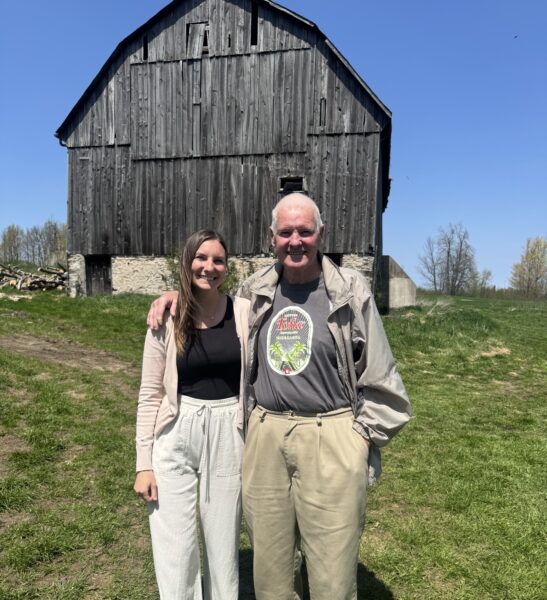
Between 1823 and 1825, Peter Robinson, a member of Upper Canada’s executive council, orchestrated two significant immigration schemes to populate the rugged lands of Ontario. The first was in 1823 and the second in 1825. The 1825 initiative brought just over 2,000 Irish immigrants from counties Kerry, Cork, Tipperary, and Limerick to Kawartha Lakes and Peterborough County. The settlers, fleeing poverty, hardship and religious persecution, were offered free passage, 70 to 100 acres of land, provisions and farm equipment. Over 50,000 applied, and 417 families were selected to immigrate. The majority of these families settled in Emily Township. They established communities such as Downeyville, transforming forested landscapes into thriving villages centred on their faith and shared heritage.
Some descendants are fortunate enough to continue to live on the original land grants. One such family is the Sullivans, whose farm turns 200 this year.
I spoke with Ronald Sullivan and his daughter Sarah and saw the Sullivan farm firsthand. Ron is the great, great grandson of John Sullivan, and Sarah still lives on the original Sullivan homestead granted in 1825. We sat in the kitchen of the old farmhouse (stagecoach), and Ron drew my attention to a big blue-green binder on the table. It was full of papers and photos carefully tucked in plastic pockets, the origins and generations of the Sullivan family carefully documented.
The Sullivans were passengers on the ship Regulus, which set sail from Cork harbour on May 17, 1825. It carried 157 passengers, arriving in Quebec on June 19, 1825. The Sullivan family, comprised of John, Margaret, and their son Timothy, journeyed by wagon to establish their new home on Concession 12, Lot 21, Emily Township, now near Downeyville, Kawartha Lakes.
Ron tells how his family received flour, an axe and an ox to go along with the family’s 100 acres of uncleared land. Along with those items, settlers were also given 18 months of naval food rations to assist with the move – think salt pork, oatmeal and ship biscuits, also known as hard-tack.
According to the family history binder, by the winter of 1825 John and Margaret were living in a modest log house, “located about 800 feet of where we are today,” Ron said, pointing west of the comfortable old house we were sitting in.
The settlers faced harsh beginnings. Looking out over the cultivated fields and meadows of the farms today, it’s hard to imagine the dense woodland this was when the immigrants first arrived. Early settlers often faced high mortality rates. In the Peter Robinson papers it is reported that 31 of the Irish settlers travelling or settling in Emily died in 1826, including little Timothy Sullivan.
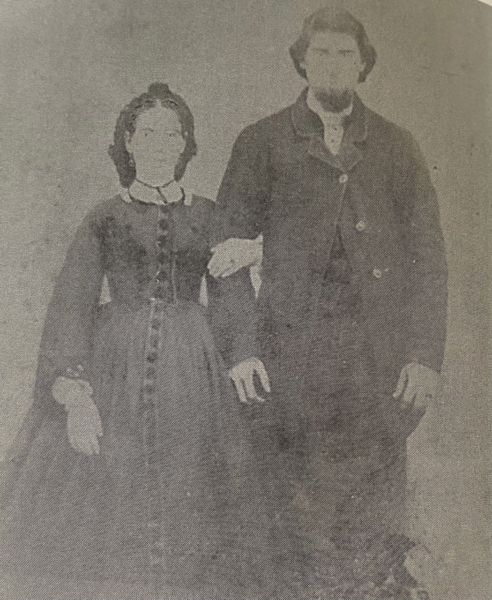
By the end of 1826, John and Margaret had cleared half an acre and had one cow. The Census for 1851 shows that the family had grown substantially through the intervening years, and their six children now filled the log house.
In 1858, the Sullivan’s upgraded and built a wood frame house, also used as a stagecoach. The lumber was bought from the Boyd’s saw mill in Bobcaygeon and delivered to Sullivan’s Landing (just in front of the current property) via steamboat. This must have been a very proud moment for them as it was likely larger and more impressive than the two- or three-room stone cottages thousands still lived in back in Ireland. The house was a convenient stopping place for travellers between Bobcaygeon and Peterborough, as it had water access that allowed boats to arrive from Bobcaygeon. The family used both buildings, the log house and the new one, as dwellings. Unusually, the new house had two entrance doors on the south side; one for guest use, and one for the family.
John Sullivan Jr., the eldest son, inherited the farm and the census of 1861 illustrates that the farm was prospering, of the 100 acres, 40 acres of crops included: fall wheat, spring wheat, peas, oats, and one acre of potatoes and two of turnips.
John Jr. married Catherine Brennan around 1865 at St Luke’s in Downeyville. Together the couple had at least five children, Margaret Ann, John Michael, Catherine, Thomas, and Cornelius.
John Jr.’s mother, now widowed, gave the newlyweds space to raise their family in the new house. She instead lived close by with her eldest daughter Julia in the old log house. When Julia died in 1913, it is thought that the log house and other older buildings fell into disrepair and were demolished.
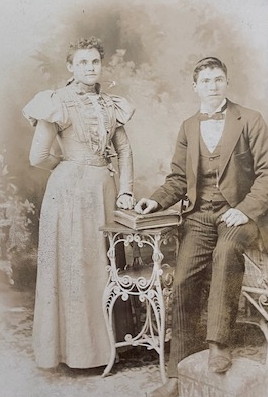
When John Jr. passed in 1910, the farm was inherited by his younger son Thomas, as the eldest son, John Michael, had already purchased his own farm.
Thomas wed Mary Perdue, whose family farm neighboured the Sullivan’s. Together Thomas and Mary welcomed 10 children, Thomas A., John E., Robert J., Lucille ‘Lucy’, Mary Ann, Thomas Ignatius, William, Austin J., Stephen F., Alphonse, and Albert.
Ron recalled that his grandparent’s cows pastured in the ‘summer ranch’ which was between Shoreview and Kings Wharf and his grandparents would simply “walk the cattle up the road, there wasn’t this kind of traffic that we see today.” The meat was butchered in the winter, as there was no fridge, and throughout the year salted beef would have been eaten.
As busy as the farm usually was, there was always time made for a little fun. Ron smiled as he remembered, “everyone knew where the good berry patches were. There was a strawberry patch close to the farm, but Aunt Lucy would drag dad to the raspberry patches all the time, he (Ron’s father, Stephen) ate so many growing up, there was never a raspberry pie at home, even though it was my favourite.”
Following the death of Ron’s grandfather, Thomas Sullivan Sr., in 1941, the family farm was passed down to Thomas Ignatius — affectionately known as Uncle Tommy. Around this time, the farm transitioned from livestock to crop production, focusing primarily on hay and wheat, and the cows were sold.
While Uncle Tommy managed the farm, his brother — Ron’s father — Stephen, worked at the munitions yard in Lindsay and later enlisted in the Second World War. Upon returning home, he married Dorothy O’Neill in 1948. Dorothy’s family were neighbours of the Sullivans.
Shortly after their marriage, Stephen and Dorothy moved to Toronto.
Although Ron enjoyed life in Toronto, some of his most cherished childhood memories were made during summer visits to Uncle Tommy’s farm. He fondly remembered fishing off the old dock, swimming on hot days, and helping out with the daily farm chores. Despite the house lacking indoor plumbing at the time, Ron never seemed to mind — it was all part of the adventure.
Uncle Tommy passed away in 1962, and fortunately for Ron, the farm was inherited by his parents, and the family moved to the Sullivan homestead permanently. “Growing up, I knew everyone,” Ron recalled. He completed Grade 12 at LCVI and, after graduating from I.E. Weldon, returned to Toronto.
While living in Toronto, Ron met and married Sharon and the family relocated to Bobcaygeon, where they raised their two daughters, Carley and Sarah.
Ron’s daughter Sarah fondly remembers catching perch from the lake in the family’s old metal boat —one of many simple but treasured memories that captured the spirit of life on the farm.
After Stephen’s passing in 1999, Ron inherited the farm, continuing the legacy of a place brimming with love, family, and cherished memories.
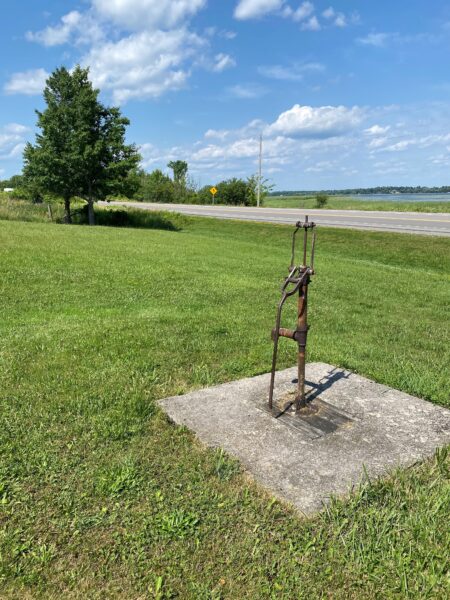
In October 2016, Sarah returned to the farm. Initially, she had no intention of staying long — maybe just a year at most. She was merely looking for a place to rent, and the house had been vacant for some time. However, as the years passed, Sarah’s vision for the property evolved, and she made the decision to stay and restore it. In 2021, Sarah planted an extensive garden to the left of the homestead, honouring the tradition of her family.
As I sat with her, Sarah reflected on how she always felt a deep connection to farming and gardening. “I couldn’t think of anywhere else I wanted to be,” she said. “I just wanted to be in the garden.” Today, Sarah is the proud owner of Pigeon Lake Permaculture, a farm dedicated to providing fresh, organic vegetables to her community.
“At first, it was just about doing my own thing, but now I think about how this farm has been in my family longer than Canada has been a country.” She paused and added with pride, “There aren’t many farms like this anymore.”
To this day, Ron can often be spotted at the farm, either fixing something, splitting wood, or simply watching the lake. He remains a constant presence, taking every opportunity to return. “I love this place.”
With thanks to the Sullivan family. Has your farm/land been in the family for over 100 years? We’d love to hear your story and recollections. Please contact Laura Love at or visit kawarthalakes.ca/moments.



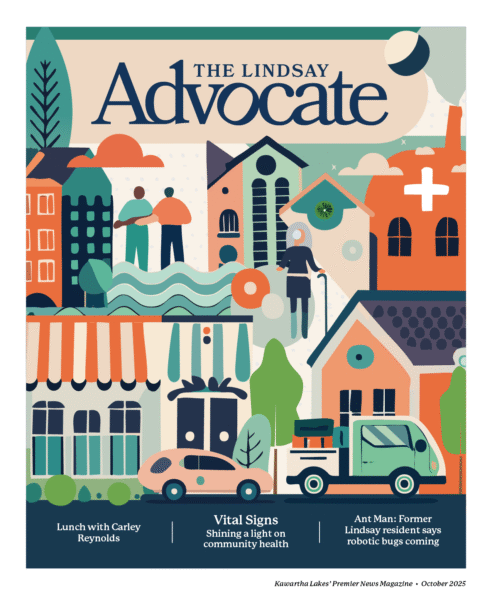


My Great Great Grandparents were Sullivans/Clancy.
Ellen Sullivan Married John Clancy on November 23 1881.